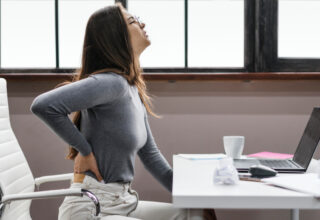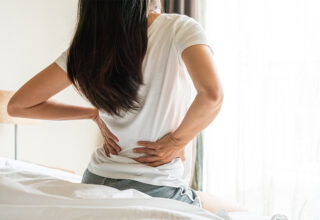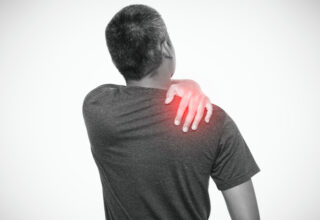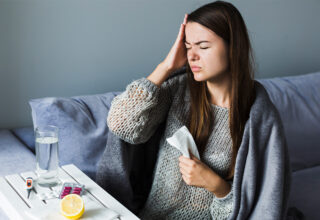Having a baby is one of the most life-changing experiences for a woman. No matter how you give birth, the post-partum period can be difficult for new mums.
Postpartum-recovery, especially after C-section can bring unique challenges—one of which is back pain.
If you had a c-section and are experiencing back pain—you’re not alone. It’s quite common and there are real reasons behind it.
Let’s explore what causes back pain after C-section and learn simple and effective tips to find relief.
Causes of Back Pain after C-Section
Back pain after c-section (caesarean section) can show up in many ways. Some women feel a dull ache in the lower back, some experience sharp spasms around the mid or upper back.
There isn’t just one cause, it’s often due to a mix of different factors. These include:
1. Hormonal Changes
During pregnancy, your body releases a hormone called relaxin. It loosens your ligaments and joints to prepare your body for childbirth. Your body releases this hormone no matter if you’re having a vaginal delivery or a c-section.
This hormone doesn’t disappear immediately after delivery and can stay in your system for some time. Due to this your joints remain flexible and less stable than usual, which makes it easier to strain your back even with small movements.
The good news is this gradually improves as your hormones stabilise and your body regains strength.
2. Weight Gain and Body Changes
It’s completely normal to gain weight during pregnancy. As the baby grows, the extra weight can gently shift your pelvis forward, increasing the curve in your lower back. This can put extra pressure on your spine.
After delivery, the muscles of your back and core may still be weak. This leaves your spine less supported and causes back pain or discomfort.
3. Breastfeeding Posture
Breastfeeding is a beautiful bonding experience for the mother and baby. As the babies need to be fed frequently, especially during early months, sitting in the same position for a long time can strain your neck, shoulders, and back.
Many new mums unconsciously hunch forward or shrug their shoulders while feeding their baby. This can also cause muscle tension in the upper and mid-back.
4. Lifting and Carrying Your Baby
Even though your baby may weigh a few pounds, lifting and carrying them can take a toll on your healing body.
To put your baby down or to lift them, you may find yourself constantly leaning into the crib, car seat, or pram in awkward positions. This can strain your lower back especially when your abdominal muscles haven’t fully recovered after the surgery.
5. Effects of Anesthesia
Before a c-section you get anesthesia which can be epidural or spinal block—to numb the lower body for surgery.
Although these are considered safe and widely used, some women experience mild soreness or muscle spasm near the injection site afterwards.
This can cause back pain or stiffness for a few weeks or months after the procedure.
6. Fatigue and Lack of Rest
As we all know motherhood often comes with very little sleep. Taking care of a newborn is a lot of work—you have to wake up multiple times for feeding sessions, diaper changes, or to soothe a crying baby. Without proper rest your muscles don’t get the time they need to heal properly.
The constant exhaustion combined with muscle tension and stress can increase your pain and slow down your recovery.
Simple Tips to Relieve Back Pain after C-Section
The good news is back pain after c-section is usually temporary and it can be managed with a few simple self-care strategies.
Here’re a few things that can help:
1. Watching your Posture
Be mindful of how you sit, stand, and lift. Try to keep your shoulders relaxed, your back straight, and your feet flat on the floor. When lifting your baby or other things, bend your knees and use your legs instead of your waist.
If your back aches, ask your partner or someone else to put the baby in the crib, car seat, or pram.
2. Supporting Your Back while Breastfeeding
When you’re breastfeeding try to sit in a comfortable, supportive chair with cushions behind your back. To prevent hunching forward while feeding, you can use a nursing pillow or a soft cushion under your elbows.
3. Using Heat to Relax Muscles
Applying a warm compress or taking a warm shower can help ease stiffness and muscle tension.
Just a heads up: Avoid using direct heat near your c-section incision, until your doctor says that it’s safe for you.
4. Gentle Exercise and Movement
Once your GP or midwife allows you, start gentle movements like walking, stretching, or yoga.
You can also do postnatal exercises that strengthen your core and pelvic muscles (after your doctor says it’s ok for you). This can help improve stability and reduce back pain.
5. Postnatal Massage
A postnatal massage by a professional can also relieve muscle tension, improve circulation, and help you relax.
Just be sure to choose a therapist who’s experienced in postpartum care.
6. Rest
Recovery takes time and your body heals better when it’s rested. Try to rest and take a nap whenever possible.
You can also ask your partner, family, and friends to help you with the baby and daily chores.
7. Pain Relief Options
If the pain becomes bothersome—over-the-counter (OTC) pain killers such as paracetamol and ibuprofen are generally considered safe during breastfeeding.
But it’s always better to check in with your doctor or pharmacist first.
When to See a Doctor
Having mild back pain after c-section is common but you shouldn’t ignore it if:
- The pain is severe or getting worse
- You’re experiencing numbness or tingling
- You have a fever or notice swelling around your incision
- Your pain makes it difficult to move, stand, or take care of your baby
Your doctor might recommend physiotherapy or other treatments to help with your recovery.
Final Thoughts
Back pain after c-section is common, but it shouldn’t become a new normal for you. It’s usually temporary and gets better as your body heals and your hormones settle.
Be gentle with yourself—your body has gone through a major surgery and is adjusting to the new demands of motherhood. With a little time, care, and support your body will feel better and comfortable again.
If your pain persists or becomes worse, don’t hesitate to talk to your doctor.








